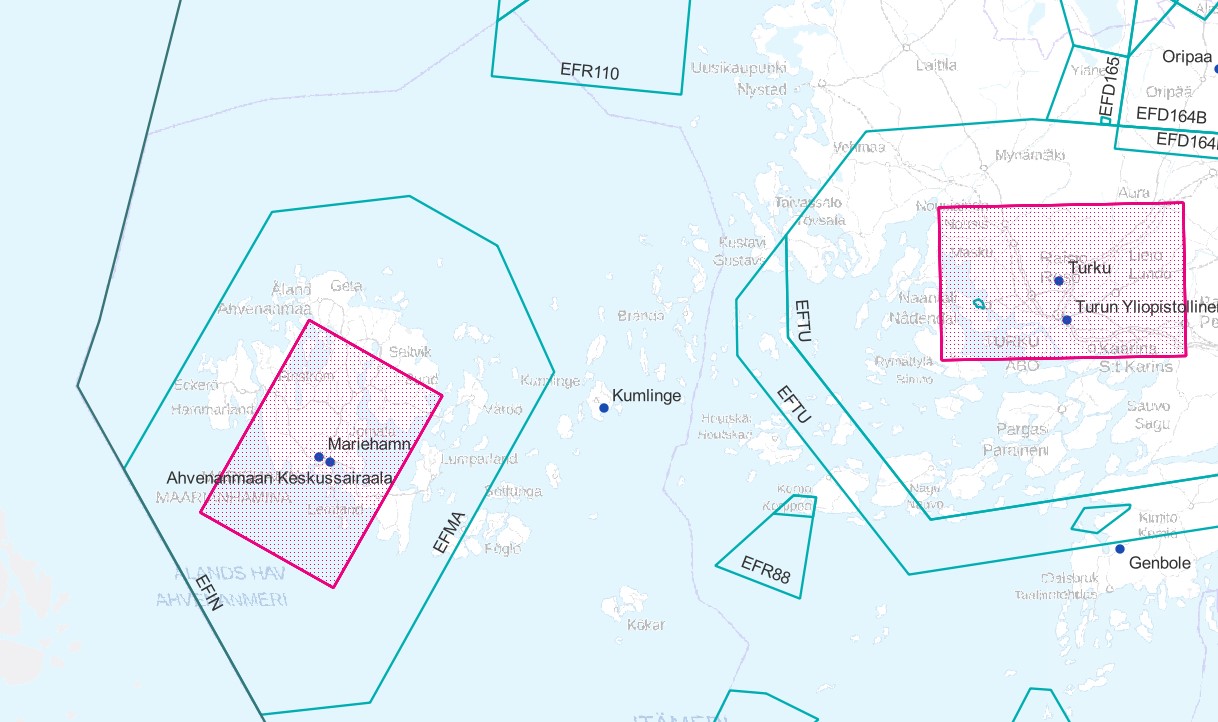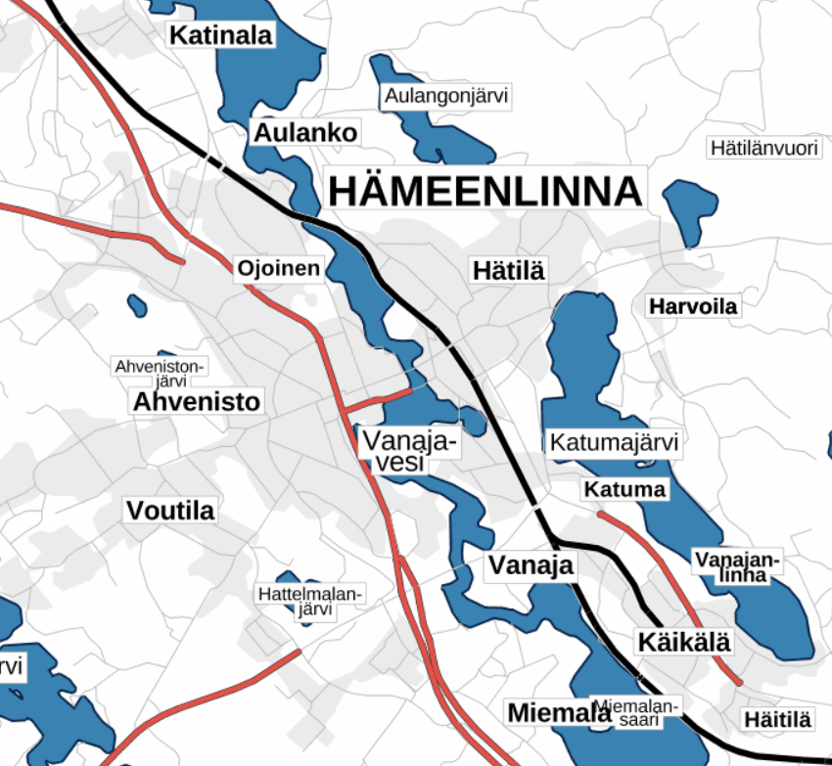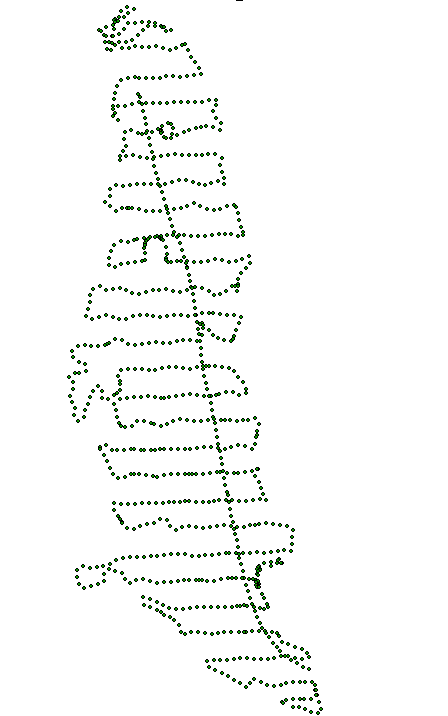2017
Type of resources
Available actions
Topics
Keywords
Contact for the resource
Provided by
Years
Formats
Representation types
Update frequencies
Service types
Scale
Resolution
-

Air traffic network-product is a link-knot routing dataset compliant with INSPIRE requirements. It includes f.ex. flight routes and aerodromes. Data shall not be used for operational flight activities or flight planning. INSPIRE Air Traffic Network-product includes spatial information of air traffic network in accordance with the INSPIRE Directive. The data has been retrieved from the EAD database maintained by Eurocontrol. Information is updated regularly but is not constantly up to date. Data can be used for purposes that are in accordance with the INSPIRE Directive, but shall not be used for operational flight activities or flight planning. ANS Finland www.ais.fi –site provides information for operational flight activities or flight planning Available layers Aerodrome Node: Node located at the aerodrome reference point of an airport/heliport, which is used to represent it in a simplified way.DEFINITION Aerodrome Reference Point (ARP): The designated geographical location of an aerodrome, located near the initial or planned geometric centre of the aerodrome and normally remaining where originally established [AIXM3.3].DEFINITION Airport/heliport: A defined area on land or water (including any buildings, installations and equipment) intended to be used either wholly or in part for the arrival, departure and surface movement of aircraft/helicopters [AIXM5.0]. Air Route Link: A portion of a route to be flown usually without an intermediate stop, as defined by two consecutive significant points Air Space Area: A defined volume in the air, described as horizontal projection with vertical limits. Designated Point: A geographical location not marked by the site of a radio navigation aid, used in defining an ATS route, the flight path of an aircraft or for other navigation or ATS purposes. Instrument Approach Procedure: A series of predetermined manoeuvres by reference to flight instruments with specified protection from obstacles from the initial approach fix, or where applicable, from the beginning of a defined arrival route to a point from which a landing can be completed and thereafter, if a landing is not completed, to a position at which holding or en route obstacle clearance criteria apply. Navaid: One or more Navaid Equipments providing navigation services.DEFINITION Navaid equipment: A physical navaid equipment like VOR, DME, localizer, TACAN or etc. Procedure Link: A series of predetermined manoeuvres with specified protection from obstacles. Runway Area: A defined rectangular area on a land aerodrome/heliport prepared for the landing and take-off of aircraft. Runway Centerline Point: An operationally significant position on the center line of a runway direction. Standard Instrument Arrival: A designated instrument flight rule (IFR) arrival route linking a significant point, normally on an ATS route, with a point from which a published instrument approach procedure can be commenced. Standard Instrument Departure: A designated instrument flight rule (IFR) departure route linking the aerodrome or a specific runway of the aerodrome with a specified significant point, normally on a designated ATS route, at which the en-route phase of a flight commences. Surface Composition: Runway surface material CTR (Not INSPIRE): A control zone (CTR) is a block of Controlled Airspace extending from the surface of the earth to a specified upper limit.
-
This dataset represents the density of all IMO registered ships operating in the Baltic Sea. Density is defined as the number of ships crossing a 1 x 1km grid cell. It is based on HELCOM AIS (Automatic Identification System) data. The HELCOM AIS network hosts all the AIS signals received by the Baltic Sea States since 2005. The AIS Explorer allows to compare density maps of different ship types per month: http://maps.helcom.fi/website/AISexplorer/ The data was processed to produce density maps and traffic statistics. All scripts are available in GitHub: https://github.com/helcomsecretariat. The production of these maps have been carried out 2016-2017 through the HELCOM project on the assessment of maritime activities in the Baltic Sea. The underlying AIS data processing work has been co-financed by EU projects Baltic Scope (2015-2017 EASME/EMFF/2014/1.2.1.5) and Baltic Lines (2016-2019, Interreg Baltic Sea Region). In addition, the Ministry of the Environment of Finland supported the work with a special contribution in view of the use of the results in the HOLAS II process.
-
The Arctic SDI Gazetteer Service is a service that contains authoritative place names data from the arctic area. The service can be used for searching place names and performing reverse geocoding. The service contains about 2.87 million place name locations with about 3.15 million place names. It contains data from following sources: * Canada (Natural Resources Canada, updated: 02/2018) * Denmark (including Greenland) (SDFE, updated: 05/2017) * Finland (National Land Survey of Finland, updated: 04/2017) * GEBCO Undersea feature names gazetteer (updated: 04/2019) * Iceland (National Land Survey of Iceland, updated: 08/2017) * Norway (Norwegian Mapping Authority, updated: 08/2017) * Russia (Russian Mapping Agency, updated: 04/2019) * Sweden (Swedish National Mapping Agency, updated: 05/2017) * USA (US Geological Survey, updated: 05/2017)
-
Kangasalan kantakartta WFS-palveluna on WFS-rajapintapalvelu, jonka kautta on saatavilla seuraavat karttatasot (suluissa tekninen nimi): Kangasalan kunnan kantakartta(Opaskartta). Palvelu perustuu Kangasalan kantakartta -aineistoon. Aineistoja hallinnoi Kangasalan kaupunki. Palvelun käyttö on maksutonta eikä vaadi autentikointia eli tunnistautumista käyttäjätunnuksen ja salasanan avulla.
-
Museoviraston INSPIRE katselupalvelu on WMS-rajapintapalvelu, jonka kautta on saatavilla seuraavat karttatasot (suluissa tekninen nimi): Kiinteiden muinaisjäännösten pistemäinen sijainti/ Protected Sites - Archeaological (PS.ProtectedSitesArchaeologicalPoint), Kiinteiden muinaisjäännösten aluemainen sijainti/ Protected Sites - Archeaological (PS.ProtectedSitesArchaeologicalPolygon), Aluerajauksina merkityt valtakunnallisesti merkittävät rakennetut kulttuuriympäristöt, RKY/ Protected Sites - Landscape (PS.ProtectedSitesLandscapePolygon) Pistemäisinä merkityt valtakunnallisesti merkittävät rakennetut kulttuuriympäristöt, RKY/ Protected Sites - Landscape (PS.ProtectedSitesLandscapePoint) Viivamaisina merkityt valtakunnallisesti merkittävät rakennetut kulttuuriympäristöt, RKY/ Protected Sites - Landscape (PS.ProtectedSitesLandscapeLine) Palvelu perustuu suojeltujen, rauhoitettujen ja valtakunnallisesti merkittävien kulttuuriympäristökohteiden tietoja sisältäviin muinaisjäännösrekisteriin ja RKY-inventointiin. Aineistoja hallinnoi Museovirasto. Palvelun käyttö on maksutonta eikä vaadi autentikointia eli tunnistautumista käyttäjätunnuksen ja salasanan avulla.
-
The technical harvesting potential of small-diameter trees can be defined as the maximum potential procurement volume of small-diameter trees available from the Finnish forests based on the prevailing guidelines for harvesting of energy wood. The potentials of small-diameter trees from early thinnings have been calculated for fifteen NUTS3-based Finnish regions covering the whole country (Koljonen et al. 2017). To begin with the estimation of the region-level potentials, technical harvesting potentials were estimated using the sample plots of the eleventh national forest inventory (NFI11) measured in the years 2009–2013. First, a large number of sound and sustainable management schedules for five consecutive ten-year periods were simulated for each sample plot using a large-scale Finnish forest planning system known as MELA (Siitonen et al. 1996; Redsven et al. 2013). MELA simulations consisted of natural processes and human actions. The ingrowth, growth, and mortality of trees were predicted based on a set of distance-independent tree-level statistical models (e.g. Hynynen et al. 2002) included in MELA and the simulation of the stand (sample plot)-level management actions was based on the current Finnish silvicultural guidelines (Äijälä et al. 2014) and the guidelines for harvesting of energy wood (Koistinen et al. 2016). Simulated management actions for the small-tree fraction consisted of thinnings that fulfilled the following stand criteria: • mean diameter at breast height ≥ 8 cm • number of stems ≥ 1500 ha-1 • mean height < 10.5 m (in Lapland) or mean height < 12.5 m (elsewhere). Energy wood was harvested as delimbed (i.e. including the stem only) in spruce-dominated stands and peatlands and as whole trees (i.e. including stem and branches) elsewhere. When harvested as whole trees, a total of 30% of the original crown biomass was left onsite (Koistinen et al. 2016). Energy wood thinnings could be integrated with roundwood logging or carried out independently. Second, the technical energy wood potential of small trees was operationalized in MELA by maximizing the removal of thinnings in the first period. In this way, it was possible to pick out all small tree fellings simulated in the first period despite, for example, the profitability of the operation. However, a single logging event was rejected if the energy wood removal was lower than 25 m³ha-1 or the industrial roundwood removal of pine, spruce, or birch exceeded 45 m³ha-1. The potential calculated in this way contained also timber suitable for industrial roundwood. Therefore, two estimates are given: • potential of trees below 10.5 cm in breast-height diameter • potential of trees below 14.5 cm in breast-height diameter. Subsequently, the region-level potentials were spread on a raster grid at 1 km × 1 km resolution. Only grid cells on Forests Available for Wood Supply (FAWS) were considered in this operation. In this study, FAWS was defined as follows: First, forest land was extracted from the Finnish Multi-Source National Forest Inventory (MS-NFI) 2013 data (Mäkisara et al. 2016). Second, restricted areas were excluded from forest land. The restricted areas consisted of nationally protected areas (e.g. nature parks, national parks, protection programme areas) and areas protected by the State Forest Enterprise. In addition, some areas in northernmost Lapland restricted by separate agreements between the State Forest Enterprise and stakeholders were left out from the final data. Furthermore, for small trees, FAWS was further constrained by the stand criteria presented above to represent similar stand conditions for small-tree harvesting as in MELA. Finally, the region-level potentials were distributed to the grid cells by weighting with MS-NFI stem wood biomasses. References Äijälä O, Koistinen A, Sved J, Vanhatalo K, Väisänen P (2014) Metsänhoidon suositukset [Guidelines for sustainable forest management]. Metsätalouden kehittämiskeskus Tapion julkaisuja. Hynynen J, Ojansuu R, Hökkä H, Salminen H, Siipilehto J, Haapala P (2002) Models for predicting the stand development – description of biological processes in MELA system. The Finnish Forest Research Institute Research Papers 835. Koistinen A, Luiro J, Vanhatalo K (2016) Metsänhoidon suositukset energiapuun korjuuseen, työopas [Guidelines for sustainable harvesting of energy wood]. Metsäkustannus Oy, Helsinki. Koljonen T, Soimakallio S, Asikainen A, Lanki T, Anttila P, Hildén M, Honkatukia J, Karvosenoja N, Lehtilä A, Lehtonen H, Lindroos TJ, Regina K, Salminen O, Savolahti M, Siljander R (2017) Energia ja ilmastostrategian vaikutusarviot: Yhteenvetoraportti. [Impact assessments of the Energy and Climate strategy: The summary report.] Publications of the Government´s analysis, assessment and research activities 21/2017. Mäkisara K, Katila M, Peräsaari J, Tomppo E (2016) The Multi-Source National Forest Inventory of Finland – methods and results 2013. Natural resources and bioeconomy studies 10/2016. Redsven V, Hirvelä H, Härkönen K, Salminen O, Siitonen M (2013) MELA2012 Reference Manual. Finnish Forest Research Institute. Siitonen M, Härkönen K, Hirvelä H, Jämsä J, Kilpeläinen H, Salminen O, Teuri M (1996) MELA Handbook. Metsäntutkimuslaitoksen tiedonantoja 622. ISBN 951-40-1543-6.
-

The Plain map series is a simple, plain and readable dataset product series in raster format that depicts the whole of Finland. The product is meant to be used as a background map whose character changes to a guide map in large scales. Impaired vision has been taken into account when designing the product. The key objects presented on the map are roads and railways, road names, buildings and constructions, administrative borders, waterways and other geographical names. The road network, public buildings and texts have been especially emphasised. The most usual limitations of colour vision have been taken into account in the use of colours. The product belongs to the open data of the National Land Survey of Finland.
-
Iisalmen kiinteistörekisterikartta sisältää valtakunnallisen kiinteistörekisterin mukaiset kiinteistörajat ja kiinteistötunnukset. Aineistoa ylläpitää Iisalmen kaupungin tonttipalvelut ja maanmittauslaitos.
-
Aineisto sisältää suunnittelutarvealueen, joka on Tuusulassa asemakaavoitetun alueen ulkopuolinen alue. Suunnittelutarvealue on maankäyttö- ja rakennuslain mukanaan tuoma käsite, jonka avulla määritellään yksityiskohtaista maankäytön suunnittelua vaativat alueet. Suunnittelutarvealueiden käyttöön liittyvien tarpeiden täyttömiseksi on syytä ryhtyä erityisiin toimenpiteisiin, kuten esimerkiksi teiden, vesijohdon tai viemärin rakentamiseen. Maankäyttö- ja rakennuslain 16 § 1 momentissa on määrätty suunnittelutarvealueista, jota koskevia säännöksiä sovelletaan myös 16 §:n 2 momentissa mainittuun rakentamiseen. MRL:n 72 §:ssä säädetään suunnittelutarpeesta ranta-alueella. Aineistoa päivitetään tarvittaessa. Aineisto on luotu leikkaamalla Tuusulan kuntarajan muodostamasta alueesta pois asemakaavoitettujen alueiden ulkorajojen mukaiset alueet.
-

Aineisto kattaa ympäristöhallinnon tekemien sisävesien (järvet, joet) luotauksien syvyystiedot. Tietoja käytetään järvien ja jokien syvyysaineiston (syvyyskäyrät ja -alueet sekä maksimisyvyyspiste) tuottamiseen. Luotauspisteisiin on yhdistetty luotauksen lähtötasotieto sekä järvien osalta järvien fysiografiatietoja SYKEn ylläpitämästä järvirekisteristä. Aineisto kuuluu SYKEn avoimiin aineistoihin (CC BY 4.0) Lisätietoja: https://geoportal.ymparisto.fi/meta/julkinen/dokumentit/Luotaus.pdf
 Paikkatietohakemisto
Paikkatietohakemisto